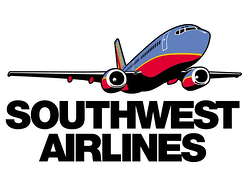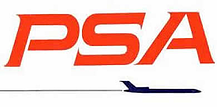This week I reintroduce the concept of SMaC to one of my customers in our Trimester Planning meeting. SMaC stands for Simple, Methodical and Consistent, as presented in Great by Choice by Jim Collins. I was struck by the irony SMaC reveals about successful companies. Most everyone acknowledges how difficult it is to accomplish change. Yet in Great by Choice their research discovered that poor performing companies change frequently, while great companies change less often. At a scale of 4 to 1.
From Great by Choice this statement stands out, “The Signature of Mediocrity Is Not Unwillingness to Change; The Signature of Mediocrity Is Chronic Inconsistency.”
Conventional wisdom says that change is hard. Far more difficult than implementing change is figuring out what works, understanding why it works, grasping when to change, and know when not to. In Great by Choice Collins indicates they anticipated innovation might be a primary distinguishing factor for the 10X success in unstable environments characterized by rapid change.
Examples in the book include Southwest Airlines and Apple Computers. In 1978 the airline industry faced deregulation. In contrast to Pacific Southwest Airlines (PSA), the company Southwest developed from its inception ideas that they’d proven successful. Lamar Muse the first president of Southwest indicated they’d patterned themselves so much around PSA that it was “primarily a cut-and-paste procedure.“ It was almost a photo copy.
 In early 1979 Southwest Airlines president Howard Putnam wrestled with what these sweeping changes in the airline industry would do to how he ran the company. He considered; Does regulation undermine our low cost model? Does regulation threaten our high-spirit employee-focused culture? Does deregulation erode the competitive value of rapid gate turns or destroy the viability of our point-to-point system? Does radical change in our environment call for inflicting radical change upon ourselves?
In early 1979 Southwest Airlines president Howard Putnam wrestled with what these sweeping changes in the airline industry would do to how he ran the company. He considered; Does regulation undermine our low cost model? Does regulation threaten our high-spirit employee-focused culture? Does deregulation erode the competitive value of rapid gate turns or destroy the viability of our point-to-point system? Does radical change in our environment call for inflicting radical change upon ourselves?
Each answer he determined was NO!
He concluded that Southwest should continue to expand based on the “’cookie cutter’ approach.”
He conjured up the image of a recipe used repeatedly to create batches of consistently formed cookies. “Do the same thing that you are doing well,” he said, and to it ”over and over again.”
He specified the recipe, Southwest Airlines SMaC Recipe. His 10 points reflect insight based on empirical validation about what works.
Contrast Southwest to PSA when deregulation hit.  The true innovator PSA no longer even exits. Southwest, on the other hand, hardly innovated at all from its founding. And as Collins points out this that the airline example is not a special case. No matter what the industry they discovered innovation was not the reason for the 10Xers doing better.
The true innovator PSA no longer even exits. Southwest, on the other hand, hardly innovated at all from its founding. And as Collins points out this that the airline example is not a special case. No matter what the industry they discovered innovation was not the reason for the 10Xers doing better.
From Great by Choice: The evidence from our research does not support the premise that the 10X companies will necessarily be more innovative than their less successful comparisons. In some surprise cases, such as Southwest Airlines vs. PSA and Amgen versus Genentech, the 10X companies were less innovative than the comparisons.
In the same quarter century where Southwest changed only 20%, Pacific Southwest Air changed 70%. PSA decided that it needed to become more like United Airlines. PSA moved away from it’s proven recipe just as Southwest, who’d copied them began to build momentum in Texas. Using the same proven method they’d invented PSA should have become the most successful airlinein history. Instead it was sold to US Air in 1987.
As Good to Great notes, “Conventional wisdom says that change is hard. But if change is so difficult, why do we see more evidence of radical change in the less successful comparison cases? Because change is not the most difficult part. Far more difficult than implementing change is figuring out what works, understanding why it works, grasping when to change, and knowing when not to.”
It’s interesting to note that in the case of Apple they went through a significant time of floundering. By the mid-1990’a Apple had fallen far from its glorious early days. Beset by chronic inconsistency, it had a revolving door at the top. John Scully ousted Steve Jobs in 1985, Michael Spindler replaced Scully in 1993, Gil Amelio replaced Michael Spindler in 1996. All through this time it lurched back and forth on its positioning. From computers for the rest of us, to computers for business, then then premium priced computers, low cost machines, back again to premium machines. Apple began serious talks with companies like Sun Microsystems about selling itself. The turnaround began in 1997.
Did Steve Jobs revolutionize the company? In fact he returned it to the principles he’d used to launch the company from garage to greatness two decades earlier. In 2005 Steve Jobs noted, “The great thing is that Apple’s DNA hasn’t changed.” In 2010 John Scully commented in an interview reflecting on the resurgence of Apple under Steve Jobs leadership, “The same principles Steve is so rigorous about now are the identical ones he was using then.” We provided this story earlier in Discipline - Steve Job’s First Step to Remake Apple.
These stories provide a dramatic example that while many companies chase innovation, the reality is discipline is still the key factor in any successful business. Jim Collins, quote from Good to Great should be placed somewhere prominently in every business, “Greatness is not a function of circumstance. Greatness, it turns out, is largely a matter of conscious choice, and discipline”
It should be noted this doesn’t mean innovation isn’t vital for growth or success. Only that it is not the end all means that many believe.
Great by Choice points out that all industries have an Innovation Threshold. Some industry thresholds are high some are low. Once a company is able to keep pace with this threshold, more innovation doesn’t seem to matter. Foundation disciplines like an SMaC recipe is critical for understanding these questions: figure out what works, understand why it works, grasp when to change, and know when not to.
My plan was to republish several blogs next week as I went on vacation. Some serious family health issues have arisen. My immediate plans are unclear. Scheduled for Monday is a repeat lesson on another primary rule for business Pearson’s Law. That may change depending on my sons health issues.
Thanks for reading.






.jpeg?width=150&height=135&name=Hand%20with%20marker%20writing%20the%20question%20Whats%20Next_%20(1).jpeg)

